
Mind the Refugee
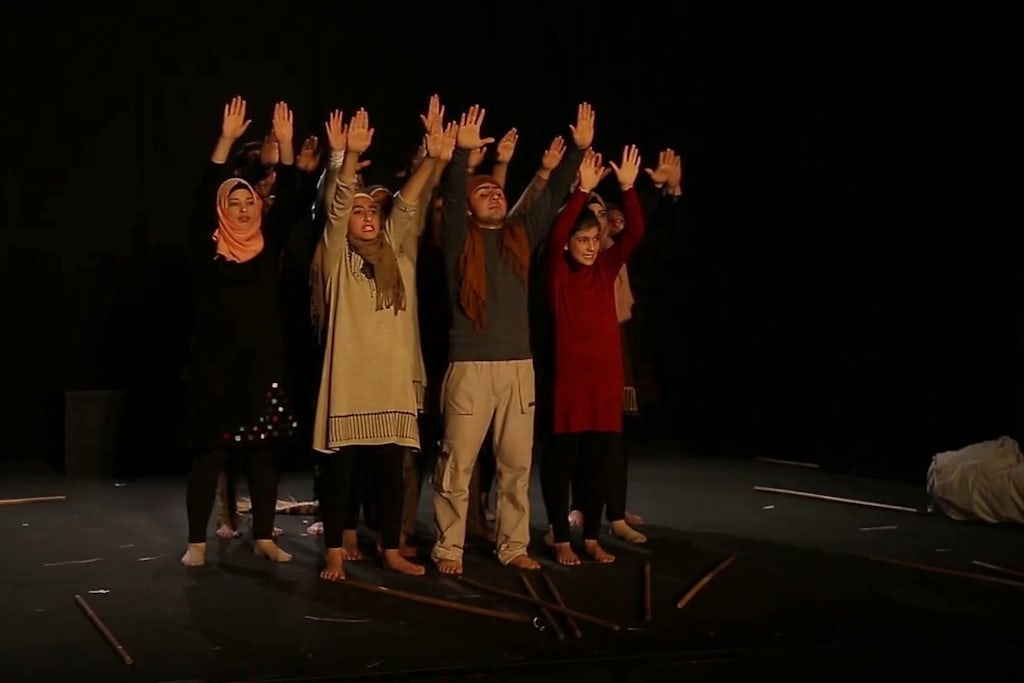
On 11 October 2017, ASSITEJ Belgium and het paleis organized a mini conference on what it means to work with and for refugees in theatre for young audiences. The event took place during the first edition of the festival Mind the World by het paleis in Antwerp. On this occasion, our guest speakers were Myvell Seddik (Action For Hope, Egypt), Mulanga Nkolo (KunstZ, Antwerp) and Şaziye Dağyapan (Mardin Festival, Turkey).
Myvel Seddik — Action for Hope
Action for Hope provides cultural development and cultural relief programmes for distressed and displaced communities. It is a pretty young organization (2015) that works independently in Lebanon, Egypt and Jordan among others. In 2012, cultural operators from the region saw the huge influx of refugees from Syria and asked themselves what they could do. The conditions in refugee camps are precarious. In Lebanon, a lot of children cannot go to school, they loose six years of education because of the language barrier (the Lebanese education system is based on English), or because they need to work to support their families. Nowadays, there are more than one million refugees in Lebanon, and these are only the registered ones … This means that refugees have become more than one third of the population. The process to obtain a legal residency is long and bureaucratic. Furthermore, refugees are not allowed to work, so they often work illegally.
In 2012, Basma El Husseiny (current director of Action for Hope) took the initiative for a collection of books, toys etc. Artists then spent two weeks in a refugee camp in Turkey. They started to do what they were best at: giving artistic workshops. Humanitarian organizations often consider art and culture as a ‘luxury’. In 2015, Action for Hope became an independent organization. They work mostly in refugee camps and marginalized / poor communities (in Egypt for example, there is hardly any cultural service outside of the capital, and no budget for art in schools).
In the work they do, there are 3 strands:
1. Community-based cultural interventions
- Cultural Relief Convoys: for these, they did a call for volunteers among artists in the Arab region (knowledge of the language is necessary). Artists then stay for two weeks in the community and give art trainings in different disciplines: music, photography, film making … There are health awareness sessions and first aid trainings as well because of the specific needs of these communities. At the end of the Convoy, there is a cultural event where they present the outcome of the workshop to the community. Two weeks are not enough, but it helps to identify talents and to give the people in these communities the services they are deprived from. Another goal is to change the perception on art and culture.
- Local Cultural Centres: Action for Hope started to established local cultural centres. They have two now in Bekaa, Lebanon, which house a multipurpose school and a small hall for movie screenings and small scale performances. They also include a library, with works by the most famous Syrian writers. They try to show Syrian heritage in multiple ways.
- Training workshops: to train cultural operators on designing cultural projects. They had a training workshop in September with 24 participants.
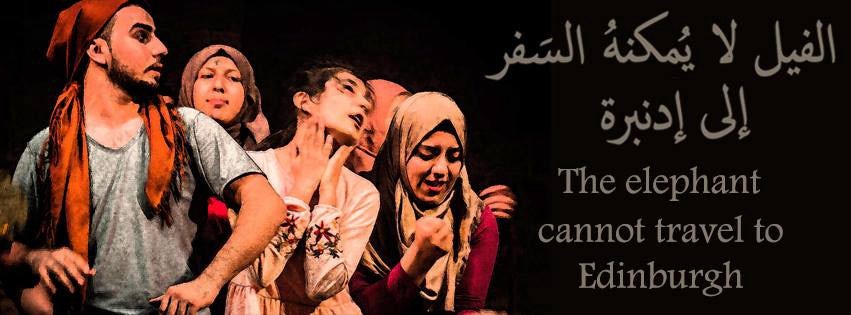
2. New artists, new voices
- Advanced Arts Training: in this training, Action for Hope cares about discovering new talent and giving them advanced training, especially in performing arts. The idea is that some of them can become professional artists. In 2013, they formed a theatre company. The show The Elephant, your Majesty, based on a piece by the renowned Syrian playwright Saadallah Wannous, got invited for the Arab arts focus at the Edinburgh Fringe festival. In a movie where the participants were asked what they would expect when going to Edinburgh, they answered ‘To see what we have in common’, ‘I imagine it to be like Tripoli, with ports, the coast’, ‘To show the world that even if I am Syrian, I can travel anywhere’ or ‘… to have the chance to see performances from all over the world. I may not sleep to see as many performances as I can’. However, they did not get the UK entry visas and the show had to be cancelled …
- Music schools: students study solfège, music history etc., Then they also play an instrument or start singing courses. In the beginning, Myvel was sceptical. How can art and culture transform people? But when she saw the results, she became a believer. The students can take the instruments home to practice. With the graduates, they created four ensembles. There is also a follow-up after graduation. Action for Hope tries to find opportunities for (paid) work for them and continues to train them with workshops. Maybe some can join other, existing bands. UNESCO was interested to support the music school because it is about safeguarding the Syrian music heritage. They will produce a cd now, so that it will be widely available.
- Video school: this started just recently: film making, editing scripts etc. Potato is an example of a documentary about children working in the potato fields.
- Scholarships in the Arts: Action for Hope also provides scholarships for university-level studies in the arts for students who wish to work professionally as artists or art teachers.
3. Showcasing, presenting and networking
- Cultural events: helping to change the perception about refugees and theatre, creating the awareness that refugees can contribute to the cultural scene and can be active members of it. At the end of 2015, they organized a cultural manifestation in Lebanon, with a theatre piece and photography exhibition among others.
- A lot of Syrian artists fled the Arab region and went to Berlin. In October 2016, Action for Hope organized a mini festival in Berlin: ‘Landscapes of Hope’, an event celebrating Syrian art. Next to artistic events, there were discussions with artists, as it is important that they can speak about the challenges they face, about how it is for them to work in a European context.
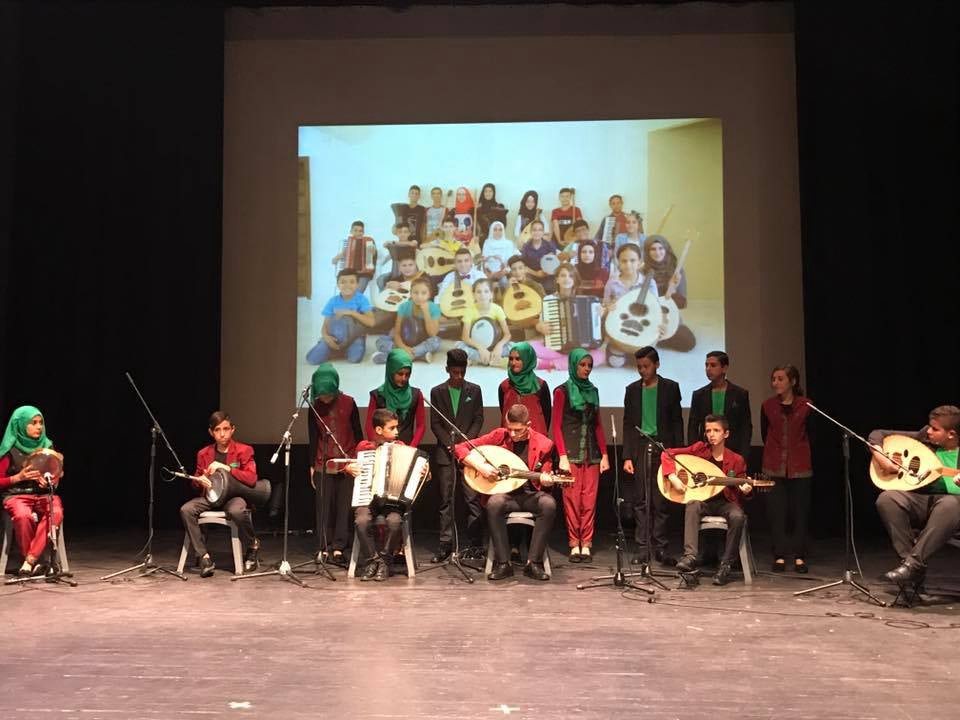
Challenges
When asked about the challenges in doing this work, Myvel mentions the perception of the families about art. Some come from quite conservative backgrounds. But when they see the process and their children on stage, it changes their mentality. She gives the example of a music school where only the boy of the family joined; the daughter was not allowed to assist. The year after, she came to an audition …
Another challenge is the perception of the audience. Action for Hope tries to introduce the people they work with as semi-professional artists, and aims for high quality. The goal is to have an audience that visits not out of empathy but that attends as they would attend another ‘regular’ play, and that has a critical attitude too. They do not want people to see this as ‘social work’.
Action for Hope is also confronted with situations that they cannot control, such as the fragility of the refugees in Lebanon. They worked for example in a refugee camp but it had to be dismantled in 24 hours. So a lot of the people they worked with, had to go to a camp governed by conservative forces. They had rules imposed on them, regarding to clothing, not going to the theatre … The difficult conditions refugees live in make it important for cultural organizations to adapt to them, to be flexible.
Mulanga Nkolo — KunstZ
KunstZ is an organization based in Antwerp, that has a focus on detecting and developing talent from different origins for ten years now. That way, they bring new stories, voices and forms into the cultural field.
They work mainly on 3 levels:
1. KunstZacademie
The KunstZacademie is a theatre-training programme with a focus on youth. The aim is to give people the skills to professionalize and let them find the way in the cultural field. To overcome language barriers, they start with physical training. In a later stage, text can be added, or they work with a translator. KunstZ trains with these youngsters for a whole year, one evening a week, and they conclude by a professional show with them. One example of this is No Man’s Land(2016).
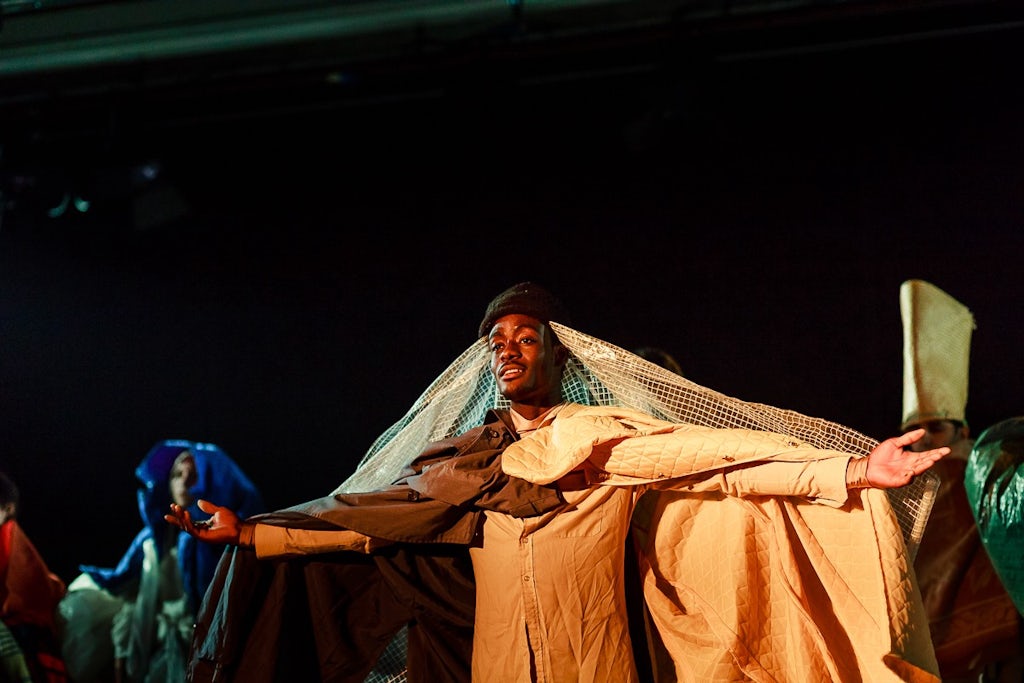
2. Trajectory counselling for people of diverse origins
KunstZ offers counselling to newcomers and people of diverse origin who have an interest and ambition to work in the performing arts. Each participant is coached individually; the guidance is always tailor-made. The pool is open to participants with an artistic ambition but also for those wanting to work in for example production. That ways, KunstZ is a bridge between the participants and the arts field.
Once a month, they also organize an open moment: for artists, for students with questions, professionals who want to find a collaborator … That way, also those who cannot be there every week, can be part of the community. Sometimes, people find each other in this community and they start working together.
3. Theatre lab — Support for artists with a professional background in their home country / autodidact artists with migrant background
A lot of people that KunstZ meets, had a career as a professional artist in their home country, but they have to start anew in Belgium. If someone has already found his own artistic language, KunstZ looks for ways to link them with the arts field in Belgium. Once again, KunstZ serves as a bridge between these artists and the field of the arts in Flanders.
Mulanga gives the example of Dying for Life: it is an example of how they are often surprised along the way by new ways to present hybrid stories. In this documentary, Andrés Lubbert and Hussein Shabeeb follow the making-of of a theatre piece, created in the asylum centre of Kapellen and in Matterhorn (home base of KunstZ) by Osama Abo Amro. Hussein Shabeeb, one of the directors, moved from Bagdad to Belgium eight years ago. In Bagdad, he studied ceramics and sculpture. Hussein is also present in the room and talks about how difficult is is for him to enter the arts scene in Belgium.
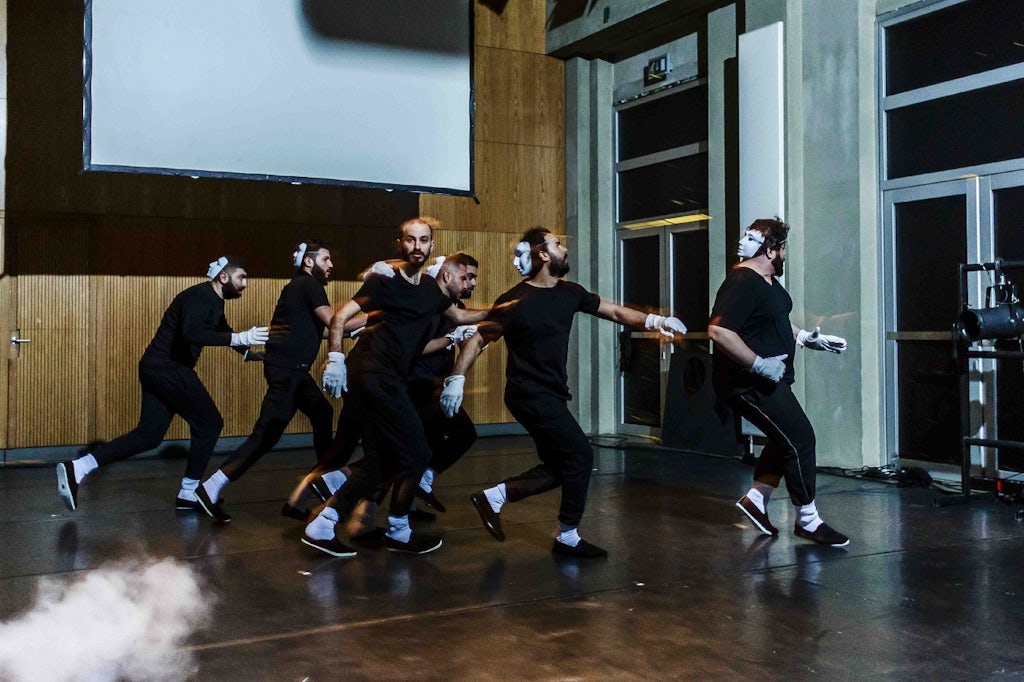
They also come across artists who were born here, but who have a ‘refugee story’ in their background, such as Fleur Khani. She made Homework, about how it is to grow up under one roof with different cultures. Other examples include Genderless by Maryam K. Hedayat, a multimedial performance about the need for a new definition of gender, or A reason to talk by Sachli Gholamalizad, in which she talks about the relationship with her mother.
Challenges
When asked what the challenges for their organization are, Mulanga describes that one needs to be very flexible; you need to find new ways to organize yourself. For example, people have to work or follow an integration course, so this interferes with their engagement in the artistic process. You cannot have a 9 to 5 mentality when doing this job. The best moment to organize your activities in when people have free time, so in the evening or in the weekend. Sometimes unexpected challenges emerge, such as: how will you tour a work with people who are illegally in the country? Dealing with language is another challenge. Two scenes on the Camino Real, a short film by Salvador Gieling, shows how they mixed different languages in one work.
Someone asks how they reach the people they work with. KunstZ engages in relationships with asylum centres, OKAN classes (classes for children and youngsters who are newcomers and do not speak Dutch) … They go out of their office a lot and invest in relationships with schools, asylum centres … They talk with the staff of the centres, go to open house days to spot talent and want to know how people are living there.
Mulanga believes that you need to step out of your comfort zone and change organizations from inside out. This means for example engaging people with another artistic background, instead of the ‘usual suspects’.
Şaziye Dağyapan
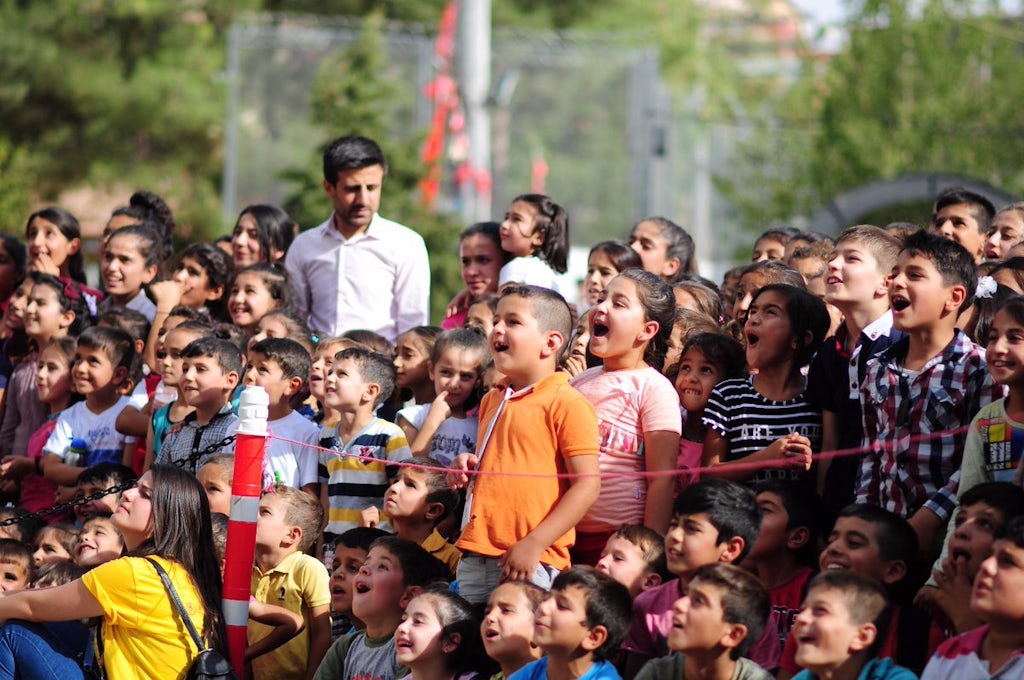
Şaziye Dağyapan is a dramaturge working for the Turkish State Theatre and is involved in the Mardin International Theatre Festival for Children and Young People in Mardin (Turkey). The festival brings performing arts for young people in a conflict-effected zone in Turkey. Saziye was supposed to be accompanied by Yusuf Kurt, director of the Mardin Youth and Culture House, but he was not granted his visa …
Şaziye starts by giving some general info about the city of Mardin. A short promo movie presents the town as a touristic attraction full of old buildings, arts and crafts, smiling children … All accompanied by cinematic music.
Reality is somewhat different. The city, with its 80.000 inhabitants, is located in the southeast of Turkey, at the Syrian border. The city has been home to different civilizations and cultures throughout history. Many languages are spoken (Turkish, Kurdish, Arabic, Syriac, Armenian) and several religions are practised (Islam, Christianity, Judaism, Yazidi). The zone has suffered from terrorism since 1984 and also the Syrian war has a huge impact on the region. Nowadays, more than 3 million refugees are in Turkey (and this is only the number of officially registered refugees. In reality, there are many more). The situation is tense in the sense that part of the population criticizes the government for accepting that many refugees. The Turkish government founded 22 sheltering centres in 10 cities and one of them is in Mardin. The government provides some services in the camps, among which education, health services and vocational training (foreign languages, computer, carpet weaving etc.) to provide the refugees with a certificate that should help them finding a job. But there is no arts service and that is where the arts associations come in.
The Mardin Youth and Culture Association was founded in 2008. Its aim is to organize social and cultural work for youth. The organization is associated with the Mardin Youth and Culture House, of which Yusuf Kurt is the head. Their work is meant to stimulate the development of young people. Some examples of activities are workshops in cinema, circus and music, education on human rights and youth exchange projects.
Şaziye mentions several festivals that are organized in the region: the International Gapgenc festival has been organized 5 times in different cities. The International Mesopotamia Circus and Street festival is a yearly festival that wants to reach out to refugees and people with different origins. It also takes place in 2 refugee camps in collaboration with Unicef. It invites national and international street and circus artists. Social circus projects are part of the festival: as a tool for the education and social inclusion of children and youngsters, they are a lever for building connections between the participants. The basic principle is to consider the local context and to identify local needs / traumas. During the year, they do workshops with professionals and local people.
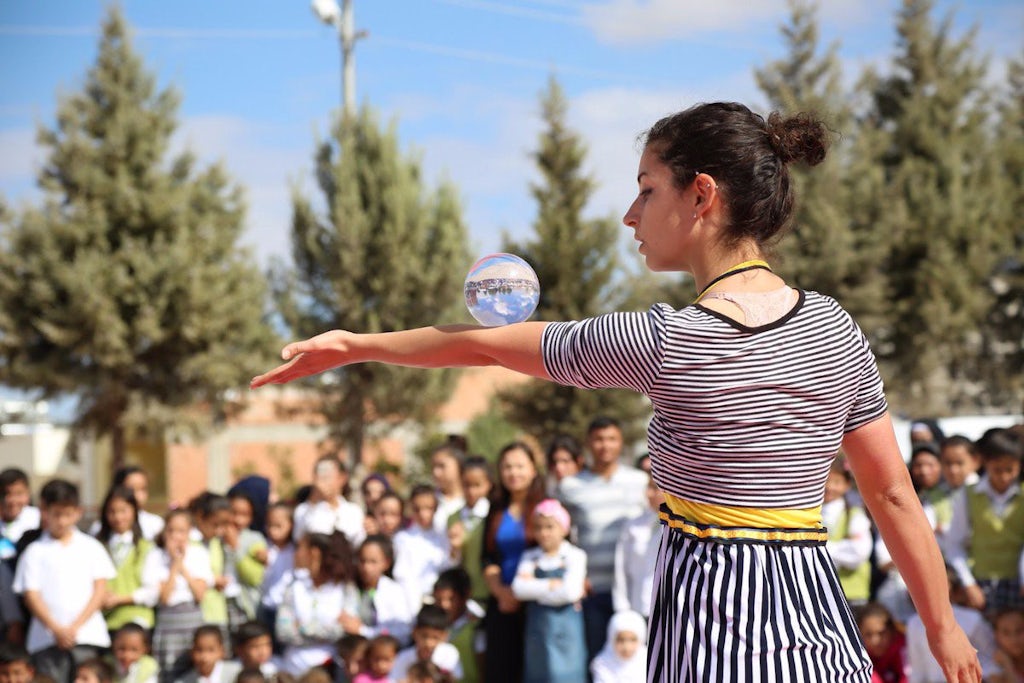
Then there is the Mardin International Theatre Festival for Child and Youth, organized by the Dramatic Arts Education and Research Association since 2009. It takes place in November. This festival is the first one in the East and Southeast Region of the country (all other theatre festivals are located in the west of Turkey). The festival aims not just at refugees; its target group is the whole population. It is supported by the Ministry of Culture, national and local governmental institutions, embassies, international cultural institutions, and local commercial companies. The festival takes place in the old and new city of Mardin, in villages, using different locations (refugee camp, historical sites, schools, squares, prison, hospital, coffee houses …) At the same time, Şaziye admits that it is not easy to work with the children of the refugee camps, as you need the right permissions. Furthermore, the camp directors do not allow short-term projects. Being asked if they reach out to Syrians in rural areas, she mentions budget as a main barrier to do so. The collaboration with Syrian artists and with the independent scene is limited or non-existent. They invite both national and international companies and also organize workshops and seminars.
Şaziye tells that two times, the festival did not happen because of the economic crisis (2011) and because of the state of emergency situation in the country in 2016.
Note: we later heard that the 2017 edition was cancelled because of unclear reasons …





